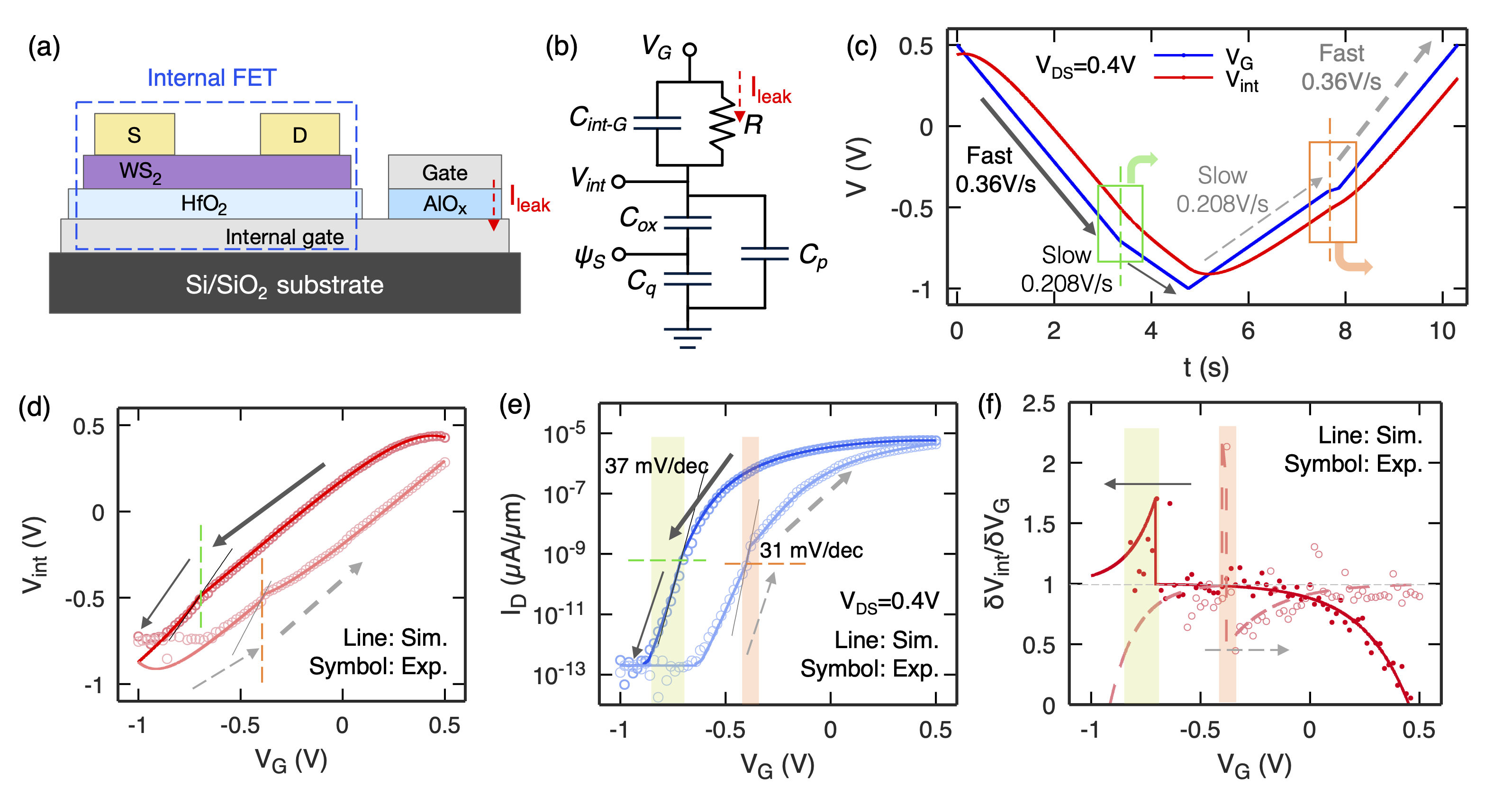Artificial "negative capacitance" effect
Sub-60 mV/dec switching observed in "NC-FET" without ferroelectric component

Negative capacitance field-effect transistors (NC-FETs) have attracted wide interest as promising candidates for steep-slope devices, and sub-60 millivolts/decade (mV/decade) switching has been demonstrated in NC-FETs with various device structures and material systems. However, the detailed mechanisms of the observed steep-slope switching in some of these experiments are under intense debate. We show that sub-60 mV/decade switching can be observed in a WS2 transistor with a metal-insulator-metal-insulator-semiconductor (MIMIS) structure – without any ferroelectric component (Fig. 1a). This structure resembles an NC-FET with internal gate, except that the ferroelectric layer is replaced by a leaky dielectric layer.
We have performed circuit simulations of the charging dynamics during the ID – VG scan based on an equivalent circuit model (Fig. 1b). Due to auto-ranging of the semiconductor parameter analyzer, different scan rates are used for different levels of drain currents. Therefore, during the transition of scan rates, there exists a transient differential internal voltage amplification |dVint/dt| > |dVG/dt|, as confirmed by simulation (Fig. 1c). The measured Vint – VG (Fig. 1d), ID – VG characteristics (Fig. 1e) and internal voltage gain δVint/δVG – VG (Fig. 1f) during the ID – VG scan in experiments are well reproduced by the circuit simulation. The experimentally observed characteristics, such as anti-clockwise hysteresis and sub-60 mV/decade switching in both sweeping directions, are reproduced in the simulation as well.
In previous demonstrations of NC-FETs, the observation of sub-60 mV/decade switching has been deemed as a mark of success for steep-slope switching devices. However, the results in this work show that by putting a leaky capacitor in series with the gate of an FET, which is clearly not a solution to steep-slope switching devices, sub-60 mV/decade switching can also be observed. It is imperative to reassess the measurement setups in the previous reported sub-60 mV/decade switching NC-FETs, to rule out similar measurement-related artefacts and verify the existence of real voltage amplification predicted by the quasi-static NC theory.
Related publications:
-
2021
ACS Nano